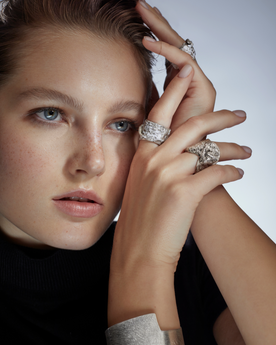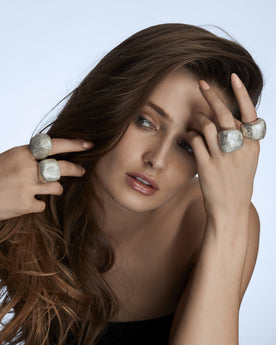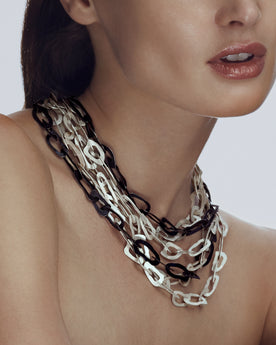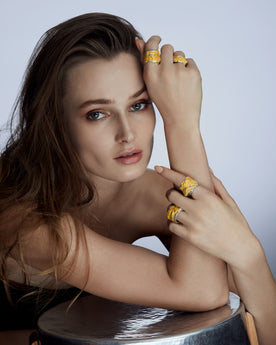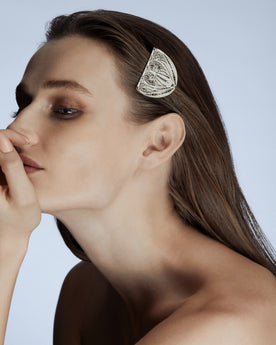What lies beneath the surface of jewellery?

Jewellery. While many consider it an essential part of their wardrobe, it’s seen by others as merely an accessory – something that they can easily do without. If we dig a little bit below the surface, we find that why we wear jewellery runs a lot deeper than what we see.
The ancient history of jewellery design
From antiquity to today, it has been a means of self-expression, social status, wealth, religion and so much more. Going back to the stone age, when the first necklaces were made out of animal teeth, bones, stones, pieces of wood, other found objects, and tied with leather and rope, it was a way to show that someone was strong, a good hunter, or on other occasions, that they belonged to a certain group or tribe.
The evolution of jewellery and how it changed over time
Little by little, the need for it to be more elaborate grew, so instead of tying a found object with a piece of leather or rope and hanging it around our necks, we started shaping stone into beads. As our societies and abilities evolved, creativity took its course and we started making beads out of faience and glass, our designs became much more sophisticated and more design elements started to be involved.
Some of the beads were shaped to mimic nature; they were made into animals, birds and plants. Miniature deities started to appear around people’s necks, worn for their power to protect, to lead the way for more money, to bring love, fertility, health… Other symbols of protection were also used, for instance eye beads to ward off the evil eye, and talismans made out of fabric and leather to give strength, health, wealth and protection.
When we reached the Bronze Age, as we started developing more effective techniques to work with metals, those techniques were naturally adopted in jewellery. Fibulas, necklaces, earrings, rings, hair accessories and bracelets became much more decorative and carried more intricate details.
The spiritual meaning of jewellery
It was no surprise that we continued to wear our religious symbols. Regardless of their religion, people of all faiths from around the world, find comfort in wearing something that is related to their spatiality and what they believe in. It’s a warming notion when you believe that this piece of jewellery, no matter how small or symbolic it is, will shield you from harm. It’s also a means of identification that many of us feel the urge to share with other people. It makes it easier to identify other members of our ‘religion’ without needing to say it in words. This also applies outside of religious context.
Other common jewellery symbols and meanings
When you graduate from a certain university, and even some schools, you are given a graduation ring. Again, this is something that people wear with pride, not just as a status to show off your degree, but also to say I belong to this institute; I belong to this tribe of people who went to this institute. Other ‘tribes’ do the same, even very small ones. Take for example a group of friends who decide, for whatever reason it may be, to purchase the same piece of jewellery, or go a step further, to get a special piece custom made for the whole group.
We wear wedding bands when we get married to show the world that we are committed to someone. In this way, we are saying “I am with someone and the two of us belong to each other.”
So, what is the purpose of jewellery exactly?
Using jewellery to symbolise how one feels about another person makes jewellery a very powerful means to express feelings. The use of the diamond engagement ring began in the Western world, and with time the concept was exported to other parts of the world.
I’m not going to go into how the engagement ring became a necessity for certain people, or how the big diamond companies’ marketing strategies made people around the world believe that it was the only valid representation of love and desire to share one’s life with another. The point here is the message that the engagement ring makes. In some regions, what the bride is given by the groom is a complete set of jewellery, and in certain parts, it’s still customary for affluent grooms’ families to gift the bride her weight in jewellery. This represents her value in the union.
Whether our need to adorn our bodies stems from the desire to stand out and say “I am different, I am unique”, or from the desire to do the total opposite and say “I truly belong”, we are using the same language to do so. Jewellery has and still is an integral part of how we express ourselves.





